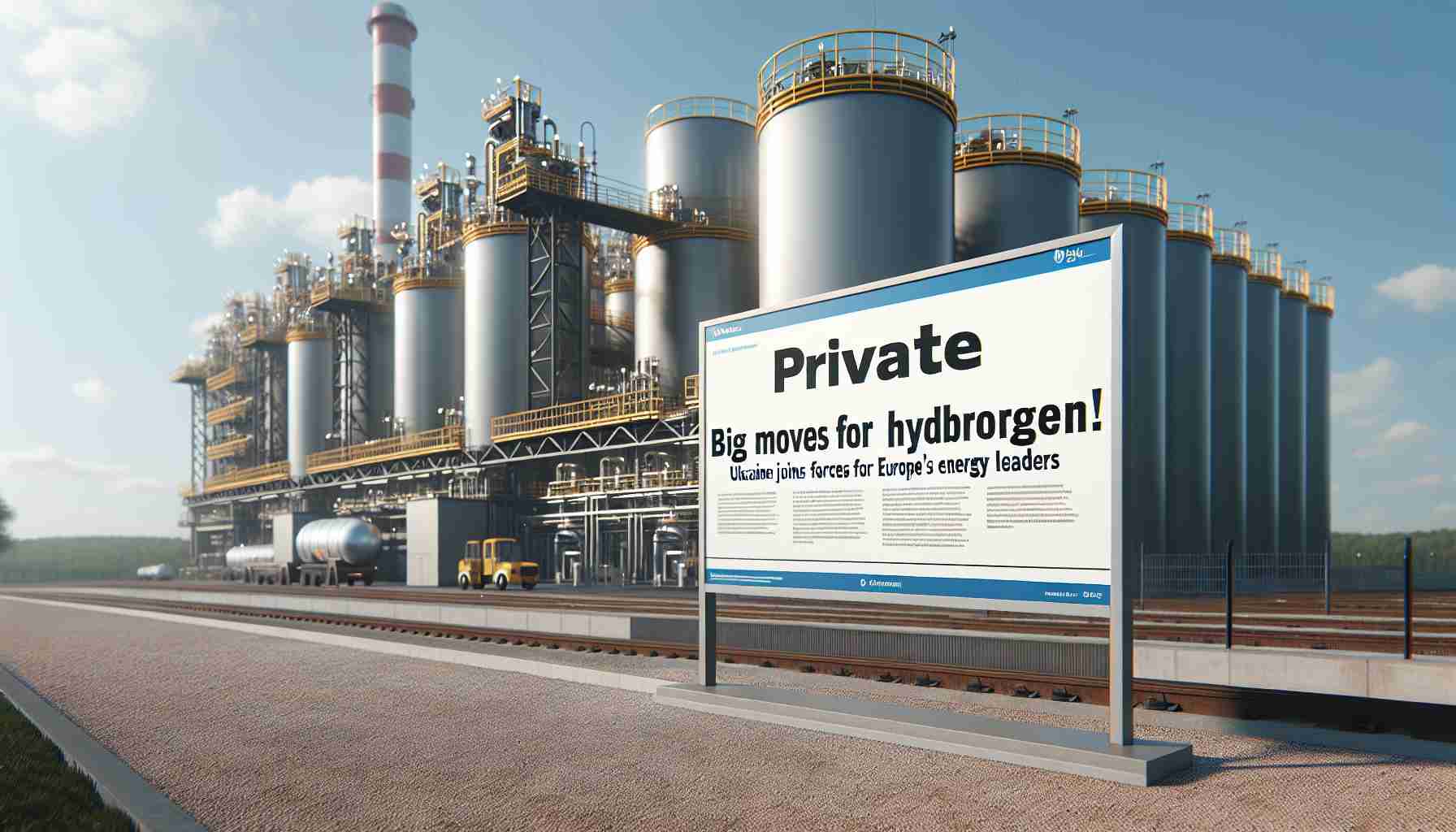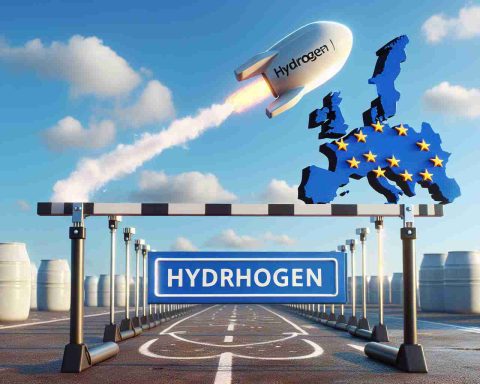Ukraine’s Hydrogen Corridor: A New Era of Energy Collaboration
In a groundbreaking development, Ukraine is set to enhance its role in the European energy landscape through a newly signed Memorandum of Understanding (MOU) involving key entities from across Europe. This agreement was formalized among leading organizations including the Gas TSO of Ukraine, Stadtwerke München, Wien Energie, and several more influential companies.
The initiative, branded as the “Ukraine–EU Hydrogen Corridor,” focuses on establishing a comprehensive hydrogen value chain aimed at promoting renewable energy utilization and hydrogen production within Ukraine. Not only does this push represent a pivotal integration of Ukraine into Europe’s energy framework, but it also provides strategic pathways for transporting hydrogen via existing pipelines.
Over the next decade, this project will facilitate the movement of hydrogen through well-established networks spanning Slovakia, the Czech Republic, Austria, and Germany, with significant rollouts expected after 2030. To ensure efficient implementation, the technical feasibility of repurposing sections of the pipeline for hydrogen transport will be studied in the upcoming 12 to 18 months, aligning efforts with other European Transmission System Operators engaged in the process.
With the commitment of various stakeholders, this initiative promises to reshape energy dynamics, promoting innovation and sustainability across the continent as Ukraine steps onto the global renewable energy stage.
Wider Implications of Ukraine’s Hydrogen Corridor
The establishment of the Ukraine–EU Hydrogen Corridor signals a seismic shift in the European energy landscape, with significant implications for society and the global economy. As European nations strive to reduce their carbon footprints, the growing reliance on hydrogen as a clean energy source could bolster energy security while reducing dependency on fossil fuels. With hydrogen projected to account for approximately 24% of global energy supply by 2050, this initiative not only enhances Ukraine’s energy autonomy but also solidifies its position as a key player in the European energy structure.
Furthermore, the corridor is expected to catalyze cultural and industrial transformation. Regions traditionally reliant on fossil fuel industries may see a renaissance as new skills and technologies are developed. The jobs created in hydrogen production, infrastructure adaptation, and related research fields could lead to economic rejuvenation in areas severely impacted by the transition away from coal and gas.
From an environmental standpoint, transitioning to hydrogen could mitigate greenhouse gas emissions significantly. However, it also necessitates careful considerations around the lifecycle impacts of hydrogen production, particularly if derived from fossil fuels. Policymakers must prioritize sustainable methods while addressing potential ecological repercussions from pipeline modifications and expansions.
In the long term, this initiative underscores a crucial trend: as energy innovation accelerates, countries must not only adapt their economies but also their regulatory frameworks to embrace a low-carbon future. The effective implementation of the Ukraine–EU Hydrogen Corridor could serve as a model for similar collaborations globally, paving the way for a cleaner energy paradigm.
Ukraine’s Hydrogen Corridor: Pioneering a Sustainable Energy Future
Overview of the Ukraine–EU Hydrogen Corridor
Ukraine is poised to transform its role in Europe’s energy market through the recently established Ukraine–EU Hydrogen Corridor. This initiative, propelled by a Memorandum of Understanding (MOU) signed by prominent organizations such as the Gas TSO of Ukraine, Stadtwerke München, and Wien Energie, seeks to develop a hydrogen value chain essential for advancing renewable energy in the region.
Key Features and Innovations
The Hydrogen Corridor focuses on several critical areas:
– Hydrogen Production: The initiative aims to bolster hydrogen production in Ukraine, leveraging its renewable energy assets.
– Infrastructure Utilization: Existing natural gas pipelines will be adapted to transport hydrogen, reducing the need for new construction and facilitating faster deployment.
Implementation Timeline and Strategy
The project is structured over the next decade with significant milestones:
– Research and Feasibility Studies: Initial studies on the technical feasibility of repurposing pipelines for hydrogen transit are set to commence within 12 to 18 months.
– Network Integration: The corridor will link Ukraine with Slovakia, the Czech Republic, Austria, and Germany, promoting a unified European hydrogen market, with substantial operational advancements anticipated post-2030.
Pros and Cons
Pros:
– Strengthened Energy Independence: The corridor will enable Ukraine to become a critical player in Europe’s energy sector.
– Sustainability Goals: By fostering hydrogen production, it aligns with Europe’s green energy directives and climate targets.
Cons:
– Investment Requirements: Significant capital is needed for infrastructure upgrades and technology development.
– Technical Challenges: Adapting natural gas pipelines for hydrogen transport involves complex engineering challenges.
Market Analysis and Predictions
Experts predict that the Ukraine–EU Hydrogen Corridor will not only enhance Ukraine’s economic outlook but also support European Union targets for reducing carbon emissions. As countries increasingly seek sustainable energy sources, hydrogen is poised to emerge as a crucial component in the energy mix, with Ukraine positioned to supply clean hydrogen to various markets.
Use Cases and Applications
– Industrial Applications: Hydrogen can be utilized in industrial processes, such as ammonia production and refining, significantly lowering carbon footprints.
– Transportation: The development of hydrogen fuel cells for vehicles presents an opportunity to innovate within the automotive sector, contributing to emissions reductions.
Trends and Insights
The global shift towards renewable energy is accelerating investments in hydrogen technologies. Ukraine’s strategic location and existing energy infrastructure make it an ideal candidate to lead hydrogen initiatives in Eastern Europe. The cooperation with major European companies signals a trend towards greater collaboration in renewable energy sectors.
For further insights on the energy landscape and trends shaping Europe’s future, visit energy.gov.















